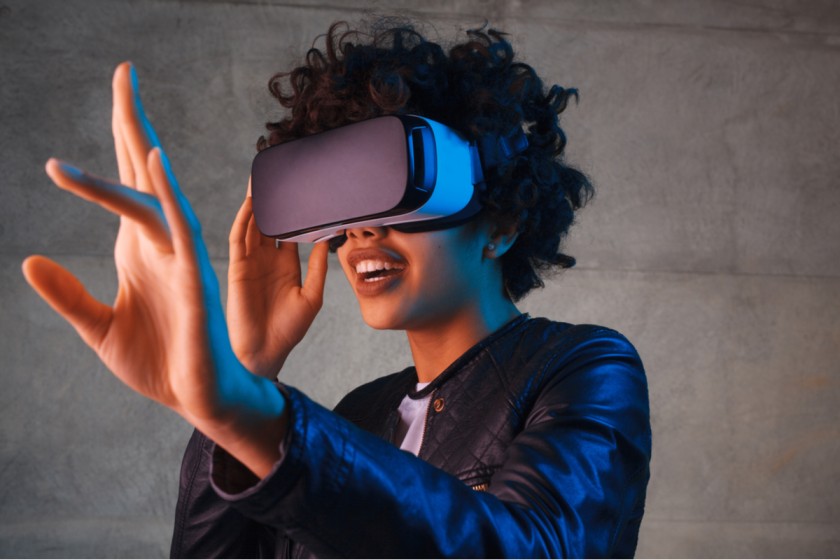How Will Technology Influence the Future of Textile Design?



This is the era of constant and consistent technological advancement. With social media's influence on the fashion industry, clients have been conditioned to want immediate access to new trends the moment they appear on runways. When it comes to today's younger generation, they want products that they can customize to their interests and demands. Mass-produced clothes seem to be losing their attractiveness.
Introducing some path-breaking technologies to fulfill these new requirements can significantly impact the textile design industry. Discussed below are six advancements that can influence the future of textile design.
-Blockchain
Track-and-trace and inventory management can be used to efficiently track apparel and supply chains. Linking products to their digital identities on a blockchain establishes a physical relationship. Blockchain provides a cryptographic stamp or serial number that works as a physical identifier, linked back to the particular product's ‘digital copy’.
Blockchain is widely used as a record-keeping system for bitcoin and digital currency. ‘Blocks’ on the blockchain are composed of digital pieces of data that hold information about transactions – transaction date, time, amount, and who participates in the transactions. In addition, each block contains a unique hash code, which serves to identify it from other blocks.
A blockchain has fantastic scope as a tool in the supply chain for increasing visibility, traceability, and efficiency. It connects all its members, from carriers and banks to intermediaries and suppliers, to facilitate the exchange of information, papers, and data.
-Virtual Reality

Customers are more likely to stick around if they can see the product on their own before making a purchase. Even more tempting to clients is the ability to share it on social media.
One of the most intriguing uses of virtual reality (VR)and augmented reality (AR) is merging the real and online worlds of retail. One of the most common uses of VR in the fashion and textile design business is allowing clients to try on ensembles in virtual reality. Customized measuring features and AR technology are used to improve this tool’s accuracy. As a result, customers may also be more inclined to purchase things they believe they've tried on.
Brands may use 3D fit technology, powered by AR, to make real-time edits to their designs and see results instantaneously. If the silhouette and fit are checked earlier in the creation phase, it can increase the overall quality of designs. As a result, there are fewer mistakes in the final sample and less waste.
AR/VR technology has significantly reduced the costly and time-consuming process of finding an appropriate fit. They've demonstrated how basic design elements, like flat sketches and technical patterns, can be transformed into 3D renderings that can be mimicked. As a result, users can make real-time alterations to cutting and fit, like loosening the fit.
Online fashion businesses can use this technology to virtually depict the size of their products so that consumers can find the right fit for the clothes they purchase. Customers can use a simple widget to measure their potential purchases in the comfort of their own homes.
-Mobile commerce
With the rise of eCommerce and social media, firms can be present in their customers' preferred channels with a fully integrated digital commerce solution. As a result, they are more visible and have more chances to close a deal.
This is mostly due to the increasing ease with which we can use cell phones to shop online. Another reason is the use of emerging technologies like fingerprint and facial recognition and digital wallets, which are primed to become the primary payment method for retail purchases.
Mobile technology is thus evidently improving by the day. Mobile commerce encompasses everything from purchasing from Instagram to smart wallets. It is one of the fastest-growing categories in eCommerce, with a noticeable impact on daily life. Mobile commerce is expected to account for 45% of the total U.S. eCommerce sector by 2021.
-Data analysis software
Management software, such as IQMS, is one example of data analysis software. Production data can be tracked and collected in real-time using ERP software, a common tool in the manufacturing industry.
Several new options for collaborative work have also opened up with the growth of cloud computing, such as the ability for factories and corporations to work collaboratively from all over the world simultaneously. This makes it easier for them to get the information they need, allowing them to communicate more quickly and effectively. An estimated $11 billion will be spent on cloud-based supply-chain management systems by 2023 to underscore the importance of this shift in data management.
Businesses can swiftly and efficiently modify their business pieces (such as the supply chain) by employing vast amounts of data to support rapid data analysis for speedy adaptation. Brands and factories may now get real-time feedback and notifications from firms regarding defective or damaged goods, thanks to new software tools on the market. As a result, they can save money, reduce waste, and ensure that the items are sufficient and offered in time. Additionally, they can provide better service to their clients as they can detect potential business dangers immediately.
-Internet of Things (IoT)

The Internet of Things or (IoT) refers to a collection of interconnected devices outfitted with software that enables them to communicate and share data via the internet. IoT allows data sharing, security, inventory management, and greater efficiency and productivity. Businesses have been affected by this rapid spread of technology in multiple ways.
The past three years have seen a significant increase in wearable technology, wearable spaces, multi-functional designs, and responsive sportswear. Many designers have been exploring and pushing the boundaries of what this means as ‘real’ lives grow increasingly intertwined with ‘virtual’ lives.
Thanks to the changes in surroundings and interactions, a whole new meaning has been given to the word ‘comfort’. Apparel technology and wearable gadgets are two areas where this is most evident. The textile design industry has had to keep up with the expectations of today's fast-paced society by focusing on comfort and employing new and interesting textiles. Every year, the clothing characterizing everyday lives improves to better reflect the realities of modern existence. In terms of the fashion and textile design sectors, this is one of the most intriguing new technological developments.
-Artificial Intelligence (AI)
Combining inventory tracking with AI's superior data prediction tools for trend forecasting might let brands gain an enormous competitive advantage. Companies can now prepare for styles and quantities on time without having to rely on traditional methods of trend forecasting, which need the observation of fashion designers, trendspotters, and influencers.
However intriguing these customer service technology tools may be, trend predicting and supply-chain management are some of the most lucrative aspects tackled by AI. For example, real-time inventory tracking has become crucial for companies since it saves time and improves warehouse management and operations.
A growing number of retailers are relying on AI for a wide range of business-related purposes. Stores are using chatbots and touchscreens to enhance customer service and provide personalized product recommendations. Most fashion websites are using some sort of AI chat technology to improve the client experience. AI algorithms track customers’ visits to match them with the best products.
Conclusion
The impact of technological development on textile design is slated to be extensive and exciting. Manufacturers, producers, marketers, and brands are all scrambling to keep up with the ever-increasing interconnectedness of their clientele's digital and physical lives.
Keeping large quantities of clothing in stock months in advance, with no idea of how well it will sell, is becoming less and less logical as such fast-paced trends continue to rise. In today's technologically advanced world, those firms who can keep up with the pace and adapt to the changing needs of their customers are likely to be the victors.
Since fashion is one of the world's most lucrative sectors, it's surprising to hear that it hasn't altered much over the previous twenty years. Low-cost manual labor may be found in many countries, and expensive production expenditures are also easy to outsource. However, due to increased worries about wages, pollution, and the needs of advanced consumers, major textile design brands and manufacturers are employing some of the most cutting-edge technologies, from AI to mobile commerce to 3D printing and blockchain.
For help with sourcing manufacturers for your apparel brand, connect with Fashinza, a B2B apparel manufacturing platform. Have the entire production process supervised with Fashinza, with daily updates, streamlined communication with manufacturers, and doorstep delivery.



















